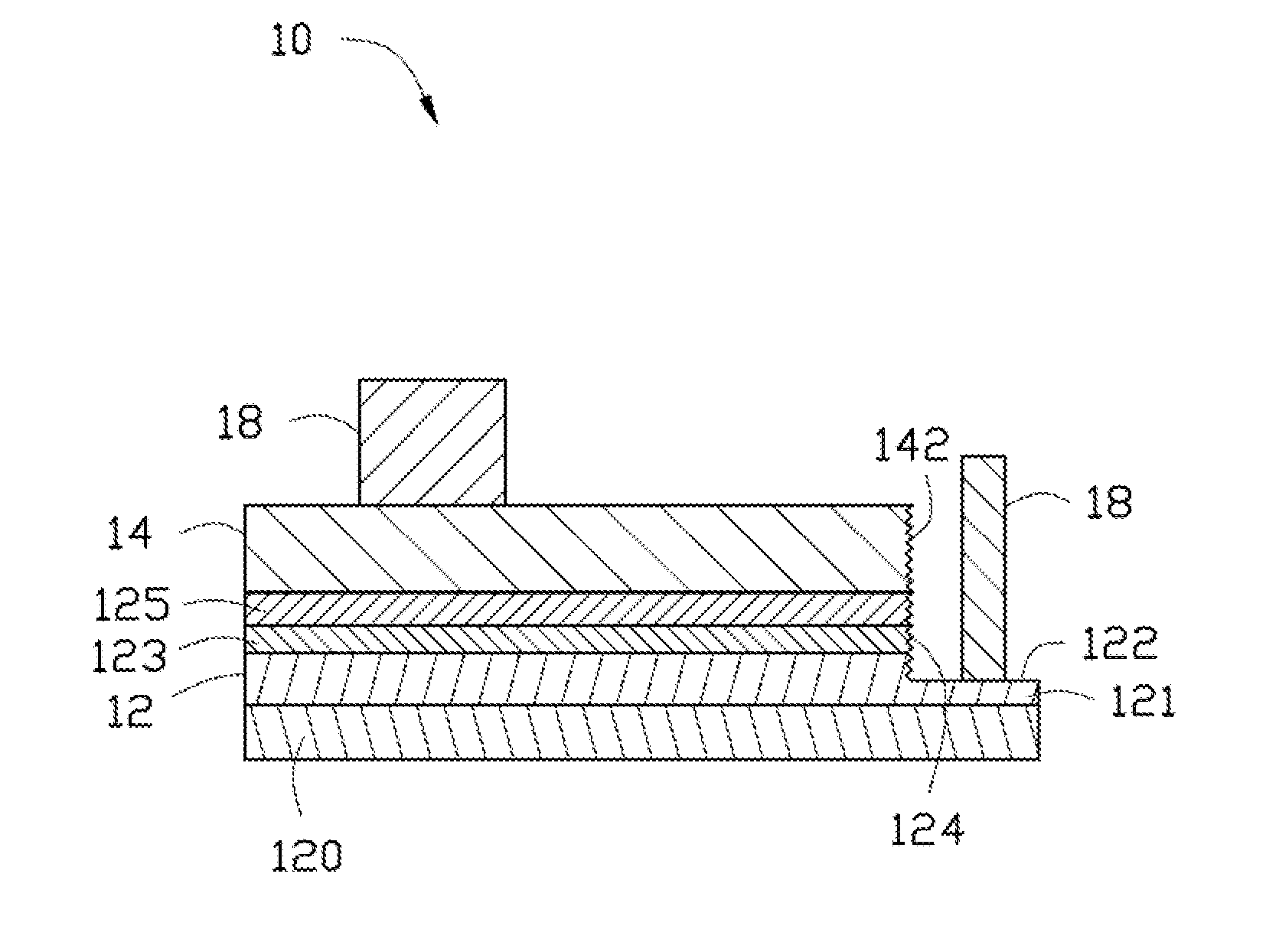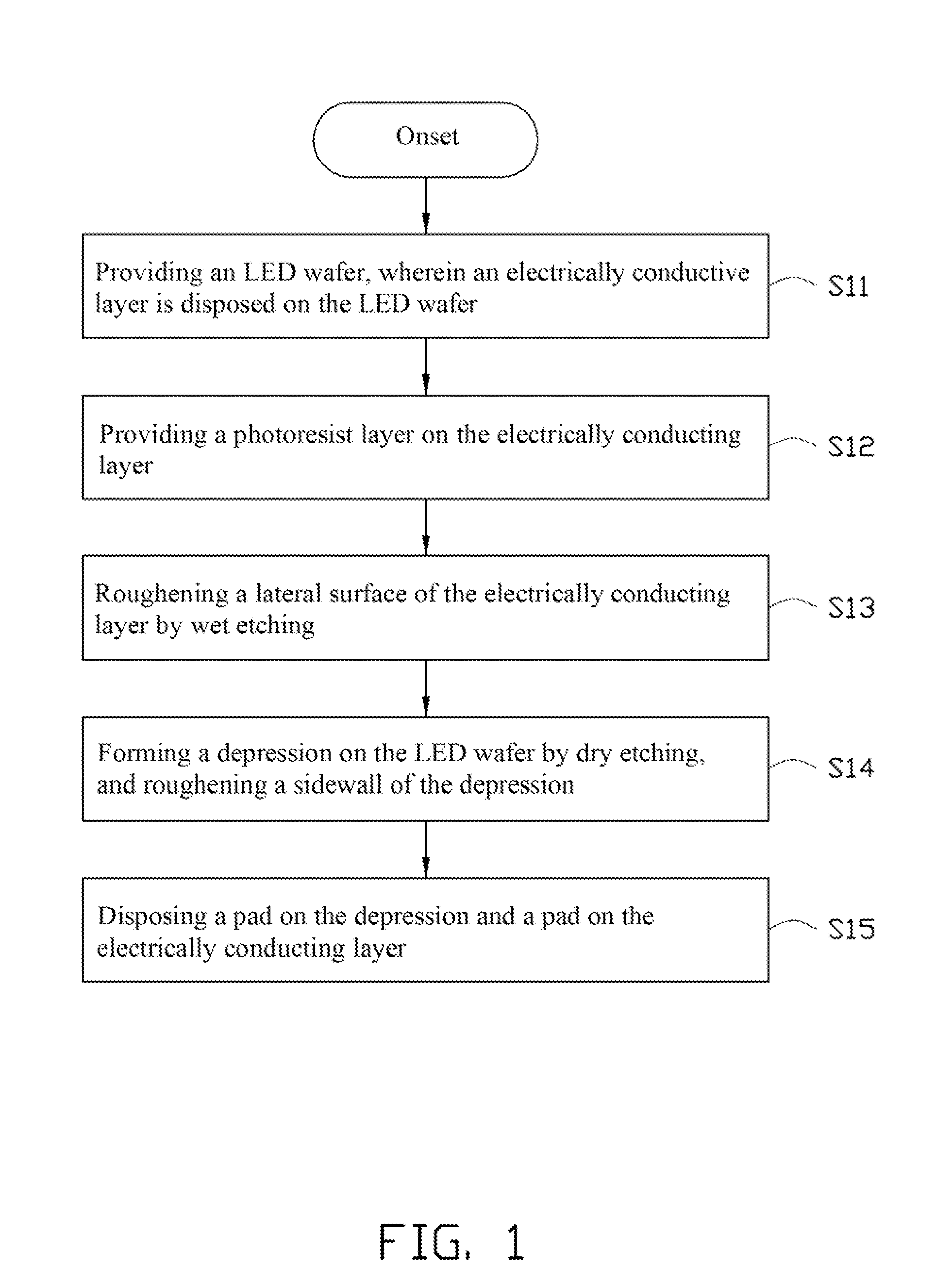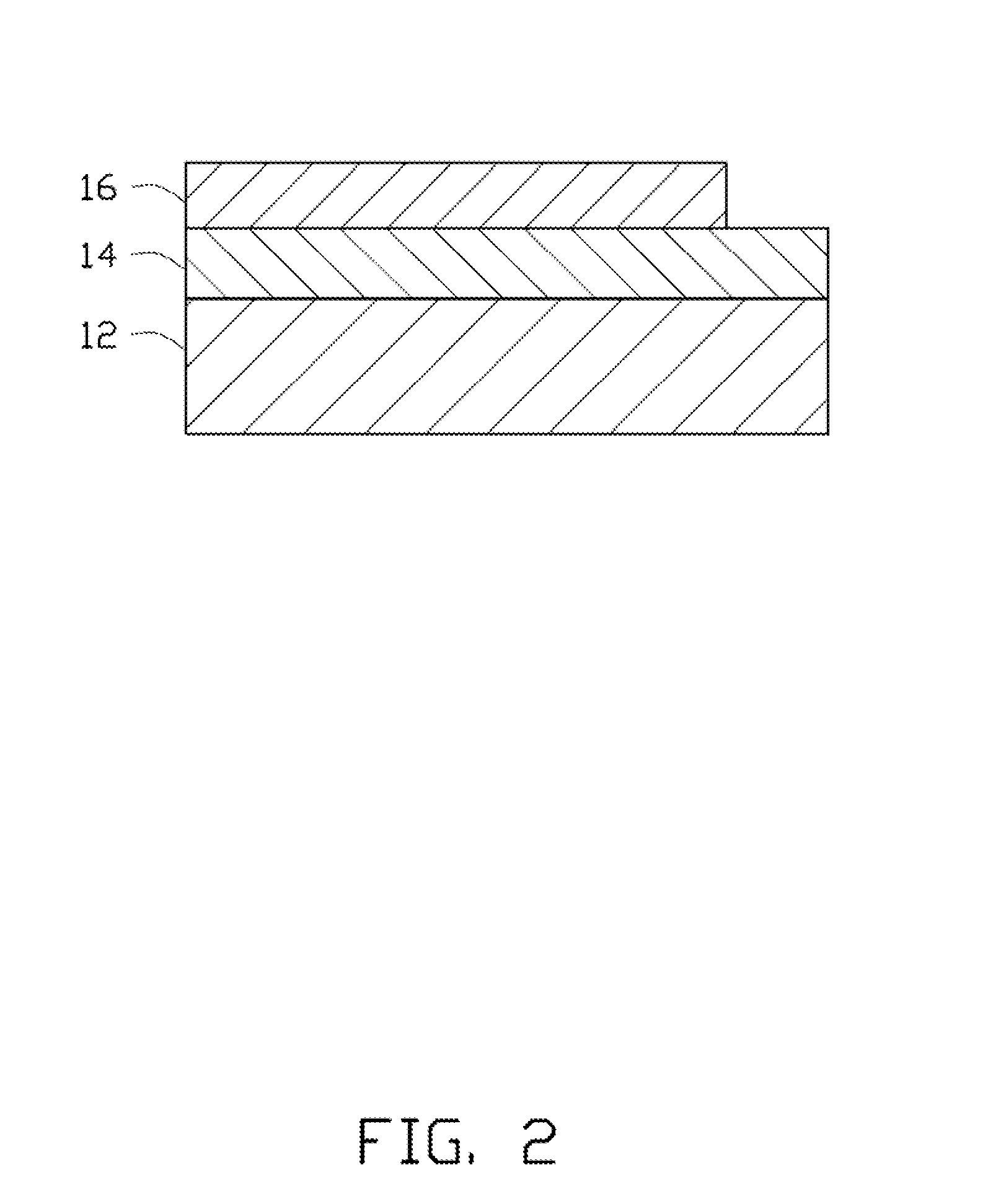Light emitting diode and manufacturing method thereof
a technology of light-emitting diodes and manufacturing methods, which is applied in the direction of semiconductor/solid-state device manufacturing, electrical apparatus, semiconductor devices, etc., can solve the problems of reducing the light-emitting efficiency of leds, adding processing time, manpower and more manufacturing costs
- Summary
- Abstract
- Description
- Claims
- Application Information
AI Technical Summary
Benefits of technology
Problems solved by technology
Method used
Image
Examples
Embodiment Construction
[0009]Exemplary embodiments of the disclosure will be described with reference to the accompanying drawings.
[0010]Referring to FIG. 1, the present disclosure provides a manufacturing method for an LED, comprising following steps:
[0011]In step S11, an LED wafer 12 is provided, wherein an electrically conductive layer 14 is disposed on the LED wafer 12, as shown in FIG. 2. In the embodiment, the LED wafer 12 comprises a substrate 120 and an epitaxial layer on the substrate 120. The epitaxial layer comprises an N-type epitaxial layer 121 on the substrate 120, a light emitting layer 123 on the N-type epitaxial layer 121 and a P-type epitaxial layer 125 on the light emitting layer 123. The electrically conductive layer 14 is on the P-type epitaxial layer 125 of the LED wafer 12. The electrically conductive layer 14 can be made by vapor deposition, and be composed of indium tin oxide (ITO). The substrate 120 can be sapphire, silicon carbide (SiC) or gallium nitride (GaN). The LED wafer 12...
PUM
 Login to View More
Login to View More Abstract
Description
Claims
Application Information
 Login to View More
Login to View More - R&D
- Intellectual Property
- Life Sciences
- Materials
- Tech Scout
- Unparalleled Data Quality
- Higher Quality Content
- 60% Fewer Hallucinations
Browse by: Latest US Patents, China's latest patents, Technical Efficacy Thesaurus, Application Domain, Technology Topic, Popular Technical Reports.
© 2025 PatSnap. All rights reserved.Legal|Privacy policy|Modern Slavery Act Transparency Statement|Sitemap|About US| Contact US: help@patsnap.com



